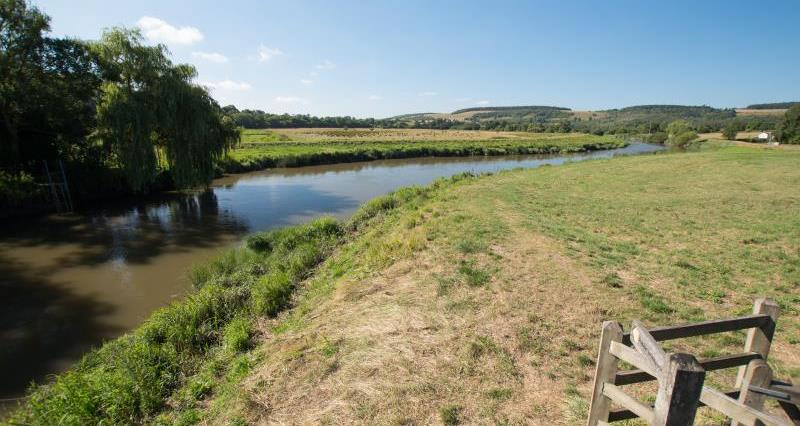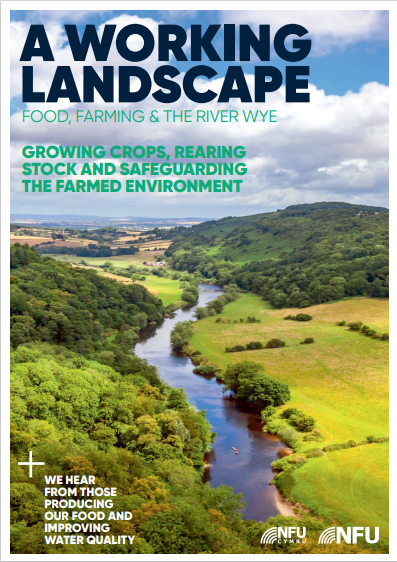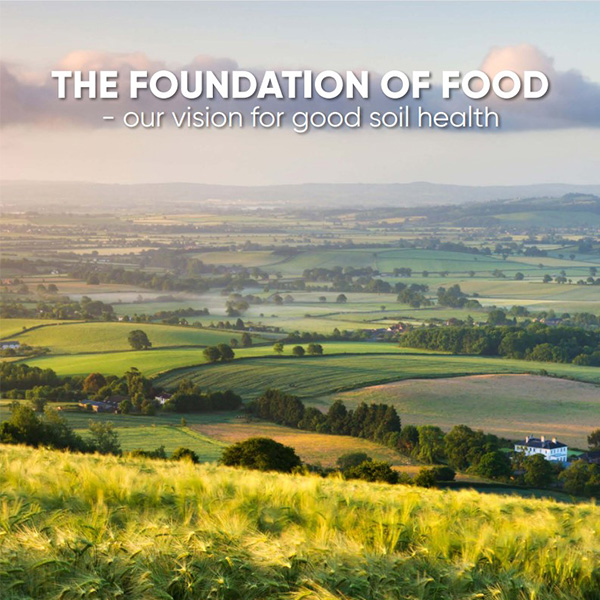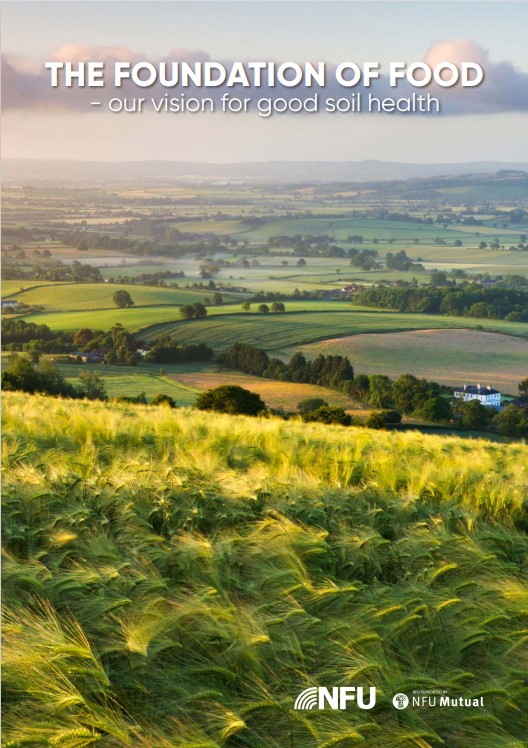Farmers will continue to adapt and make improvements on their farms to ensure they can protect the environment while producing the nation’s food.
It is vital that future farming schemes enable farmers to invest in new technology and infrastructure to tackle potential pollution issues.
1. Monitor and test your water quality
You can go online to see the water quality in your area by using the Environment Agency’s Catchment Data Explorer.
Water quality can be influenced by a number of different factors, including:
- geology
- flow
- discharges from industry
- inputs from roads and urban areas.
Checking the quality of the water flowing through your farm could be a good indicator of any ongoing diffuse or point source pollution. It will also help you determine where you might be losing nutrients from your soils or if a particular issue needs to be resolved on farm.

You can also undertake water testing yourself to better understand if there is anything you need to do to address an issue. Testing upstream and downstream of your farm will give you a better indication of your impact.
Read A working landscape – food, farming & the River Wye to read first hand experiences of farmers producing our food and improving water quality.
2. Test your soils
Testing your soils will give you a better idea of how you can meet the nutrient requirements of your crops.
Farming Rules For Water requires you to undertake the testing of cultivated land every 5 years for:
Following this system will help to avoid excessive fertiliser application, reduce the risk of water pollution through run-off, erosion, and nutrient leaching, and in time save money.
Testing your soils also gives an indication of the health of the soil, if it is healthy and contains good amounts of organic matter it will be able to retain water better and prevent run-off and soil erosion.
Read Increasing soil organic matter and water holding capacity to see how NFU Vice President David Exwood has used soil testing to assess the health of his soil and improve the water holding capacity.
For more information on soil testing and some of the metrics you can use to asses soil health head over to the NFU soils report – The Foundation of Food.
NRM laboratories
NRM laboratories has agreed a discount for NFU members to provide soil testing for Phosphorus (P), Potassium (K), Magnesium (Mg) and pH. Find out how NFU members can access discounted soil testing.
Funding
Farmers can apply for an SFI agreement to receive funding to make improvements to their soils. Find out more by visiting A summary of the SFI in 2022 - GOV.UK.
3. Plan your nutrient use
Farmers have already made great strides in nutrient management and since 1990 Soil N balances have been reduced by 36%.
Creating a nutrient management plan involves:
- understanding the nutrient values of the soil
- the crop need for the coming growing cycle
- the estimated nutrient availability.
For guidance on managing nutrients on your farm, the Nutrient Management Guide (RB209) can help you to make the most of organic materials and balance the benefits of fertiliser use against the costs – both economic and environmental.
You can also take the following steps to help determine the best steps to manage soil nutrient requirements.
- Determine the supply of nutrients from the soil.
- Look up the crop nutrient requirements at that level of soil supply.
- Estimate the supply of nutrients from organic manures applied.
- Deduct the estimated manure nutrient supply from crop requirements to find the amount of fertiliser to apply.
Further guidance and online tools are available from Tried&Tested at www.triedandtested.org.uk.
4. Protect the nutrients on your field
CSF (Catchment Sensitive Farming) has found that three-quarters of farmers have made changes to improve soil health and reduce runoff.
- 81% have buffer strips next to watercourses
- 40% of respondents voluntarily utilise cover crops and 36% have fenced watercourses or ponds.
NFU Environment forum member Caroline Knox uses cover crops to protect the soils on her farm as well as hedge bunds to prevent excess water flow causing erosion during flash flooding events – read Caroline's story.
Not testing?
Even without testing there's a lot you can do. Certain practices will improve your soil health.
- Avoid bare soils
- Minimise tillage
- Add organic matter
- Vary rotations
- Include livestock in the rotation
- Use cover crops
The key is starting today to understand your soils and work with them for healthy, economic crop and better environment.
Read the CFE (Championing the Farmed Environment) guidance, Know your soil, for more about how to protect and improve your soils.
The Applicant's guide: Capital Grants 2023 – GOV.UK will show you the full range of capital items included within Capital Grants 2023.
5. Capture and store water from your farmyard
Capturing clean water from your roofs or hardstanding by diverting it away from areas with vehicle traffic or livestock corrals can help to prevent contamination.
It also helps reduce the generation of fouled water which should be captured and stored in the same manner as slurry.
Minimising the amount of fouled water you have to store will reduce pressure on slurry stores and reduce the frequency of slurry applications, improving management of nutrients.
Rainwater harvesting
Clean water should be captured by rainwater harvesting equipment or discharged directly into surface water drains.
Repairing or installing rainwater harvesting equipment is a cost-effective technique to reduce contamination and conserve water.
For more information on methods you can use to manage water quality and the impact your business could have, read the CFE Guidance: Water quality protection for your farm business.
Funding is available
You can source funding to implement water capture on farm here: RP16: Rainwater goods – GOV.UK.
Information on the availability of grants funding under Countryside Stewardship for the management of water quality can be found on GOV.UK's Applicant's guide: Capital Grants 2023 page.
6. Improve and build on-farm infrastructure
In recent years, farmers have invested more than £182 million on farm infrastructure, match-funding CSF or Countryside Stewardship capital grants to improve water quality.
Having enough manure or slurry storage in place gives you more control over when and where to spread to maximise the fertiliser value of your slurry and to avoid loss of nutrients to water.
Plan your facilities
You need to aim for enough slurry storage to allow for at least four months without spreading, or more if in a nitrate vulnerable zone. Consider whether you can take action to reduce the amount of slurry you produce.
For those seeking more information on slurry storage funding, see the NFU's slurry infrastructure grant round 1 and round 2 pages.
For additional information and best practice advice regarding the storage and handling of manure and slurry, see AHDB’s slurry storage guide and using farmyard manure guidelines.
Funding is available
Visit our water quality essential information page and Farming Investment Fund schemes page to see some of the infrastructure funding and grants available to help you improve water quality on your farm.



